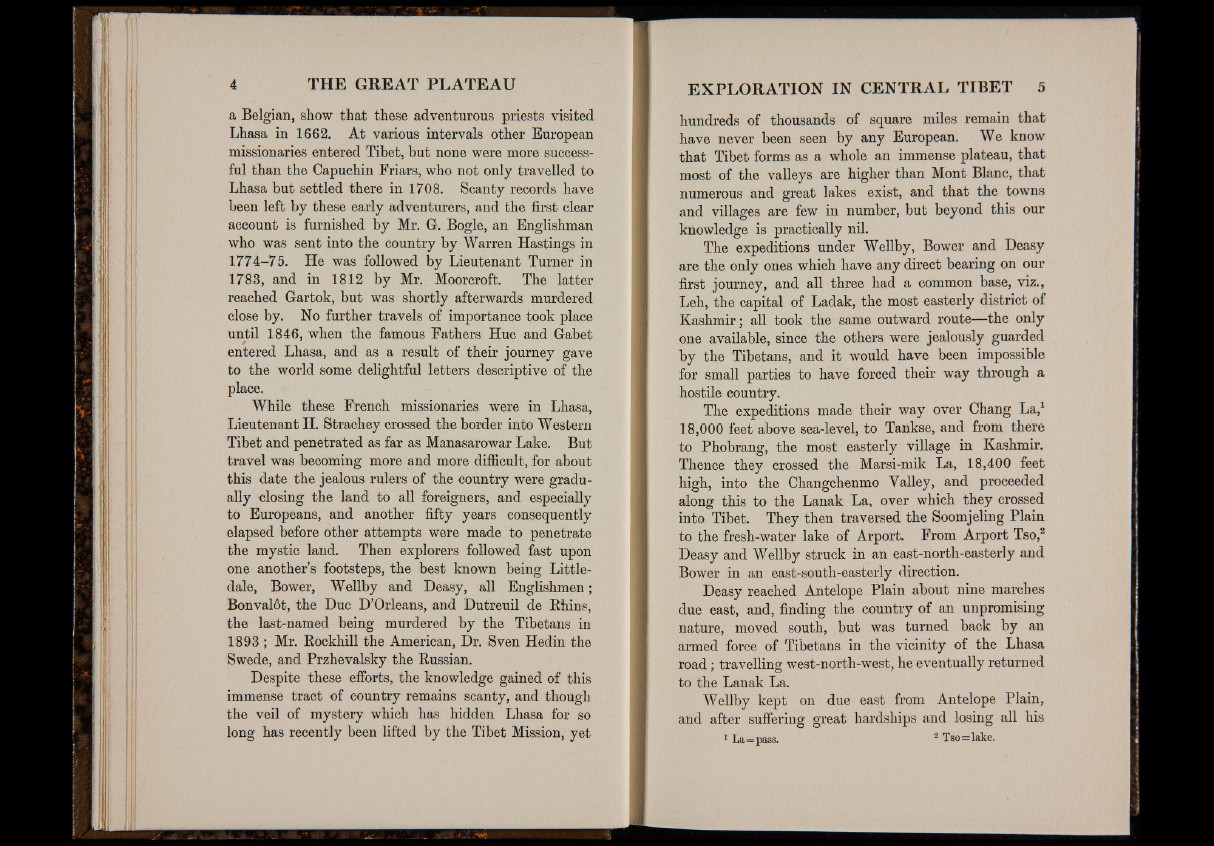
a Belgian, show that these adventurous priests visited
Lhasa in 1662. At various intervals other European
missionaries entered Tibet, but none were more successful
than the Capuchin Friars, who not only travelled to
Lhasa but settled there in 1708. Scanty records have
been left by these early adventurers, and the first clear
account is furnished by Mr. G. Bogle, an Englishman
who was sent into the country by Warren Hastings in
1774-75. He was followed by Lieutenant Turner in
1783, and in 1812 by Mr. Moorcroft. The latter
reached Gartok, but was shortly afterwards murdered
close by. No further travels of importance took place
until 1846, when the famous Fathers Hue and Gabet
entered Lhasa, and as a result of their journey gave
to the world some delightful letters descriptive of the
place.W
hile these French missionaries were in Lhasa,
Lieutenant H. Strachey crossed the border into Western
Tibet and penetrated as far as Manasarowar Lake. But
travel was becoming more and more difficult, for about
this date the jealous rulers of the country were gradually
closing the land to all foreigners, and especially
to Europeans, and another fifty years consequently
elapsed before other attempts were made to penetrate
the mystic land. Then explorers followed fast upon
one another’s footsteps, the best known being Little-
dale, Bower, Wellby and Deasy, all Englishmen;
Bonvaldt, the Due D’Orleans, and Dutreuil de Rhins,
the last-named being murdered by the Tibetans in
1893 ; Mr. Rockhill the American, Dr. Sven Hedin the
Swede, and Przhevalsky the Russian.
Despite these efforts, the knowledge gained of this
immense tract of country remains scanty, and though
the veil of mystery which has hidden Lhasa for so
long has recently been lifted by the Tibet Mission, yet
hundreds of thousands of square miles remain that
have never been seen by any European. We know
that Tibet forms as a whole an immense plateau, that
most of the valleys are higher than Mont Blanc, that
numerous and great lakes exist, and that the towns
and villages are few in number, but beyond this our
knowledge is practically nil.
The expeditions under Wellby, Bower and Deasy
are the only ones which have any direct bearing on our
first journey, and all three had a common base, viz.,
Leh, the capital of Ladak, the most easterly district of
Kashmir; all took the same outward route—the only
one available, since the others were jealously guarded
by the Tibetans, and it would have been impossible
for small parties to have forced their way through a
hostile country.
The expeditions made their way over Chang La,1
18,000 feet above sea-level, to Tankse, and from there
to Phobrang, the most easterly village in Kashmir.
Thence they crossed the Marsi-mik La, 18,400 feet
high, into the Changchenmo Valley, and proceeded
along this to the Lanak La, over which they crossed
into Tibet. They then traversed the Soomjeling Plain
to the fresh-water lake of Arport. From Arport Tso,2
Deasy and Wellby struck in an east-north-easterly and
Bower in an east-south-easterly direction.
Deasy reached Antelope Plain about nine marches
due east, and, finding the country of an unpromising
nature, moved south, but was turned back by an
armed force of Tibetans in the vicinity of the Lhasa
road; travelling west-north-west, he eventually returned
to the Lanak La.
Wellby kept on due east from Antelope Plain,
and after suffering great hardships and losing all his
1 La= pass. 2 Tso= lake.